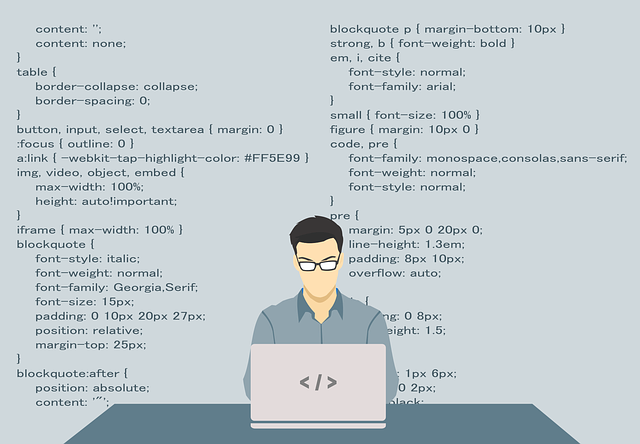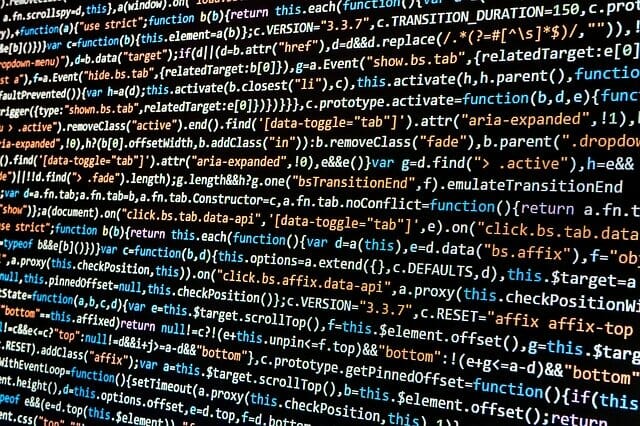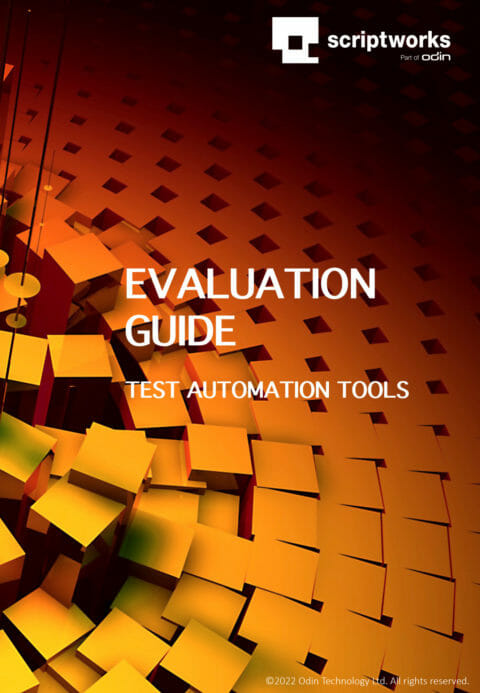
The software testing process is at the core of ensuring software quality standards are upheld. If you can't create an effective test strategy in a suitable test environment that thoroughly validates your products before customers use them, your software quality is at risk.
Software development requires a robust testing process with clearly defined test metrics that meet the needs of detailed requirement analysis. Software testing is not just a stage you have to get through quickly before releasing your software.
It is critical for software quality, and it is ongoing, from defining entry criteria to executing test cycle closure.

Testing should be a continuous effort by your development team and the rest of the company. It should be a clearly defined process like any other process and consist of:
Is a testing process or test planning the same as a testing life cycle (STLC)? Yes, it is, as long as it is well planned and executed by a testing team. Let's explore this.
Just like the software development life cycle (SDLC) is instrumental in creating digital products, the testing lifecycle (STLC) is used to test the software before it's launched.
The test environment, test plan, and test results cases are designed to understand the system, log defects, and help the development team make improvements. It is reliant on appropriate test data and a robust test strategy.
The testing life cycle (STLC) should be carefully planned and documented. You should detail the test environment setup in a test plan document that includes entry criteria, approved test cases, automation scripts, and detailed entry and exit criteria.
Thorough planning determines a successful test environment setup as much as carefully analyzed test metrics and appropriate test data.
Every step is crucial, from the test planning and case development phase to test execution. Until you fulfill all the exit criteria and complete the test closure report, every cycle step is crucial, and you should execute it strategically.
Different company members get involved at various stages to give test inputs as the test team studies previous phases and comes up with additional approved test cases.

Yes, it is. But the dynamics and roles have drastically changed. Traditionally, software testing was the responsibility of developers who used testing tools to test metrics just before the digital product was released and when they rolled out updates.
As digital systems became increasingly complex and updates and patches were released more frequently, test coverage had to be expanded, and software and test teams had to develop the testing life cycle (STLC).

These days, test case development begins with needs analysis in many organizations, even before the software is developed. Testing and development teams implement STLC phases throughout the software development life cycle to maximize resources. It includes:
An effective STLC with a comprehensive test plan document and test result analysis produces superior results to traditional post-development testing.
The key is to use the testing environment to discover critical insights that will help improve the software quality.
The good news is that there's a simple, sequential way to achieve this in six key phases. Let's take a look at all the recommended STLC phases.

To ensure your STLC is effective, it's crucial to observe six key STLC phases. Each STLC phase plays a critical role in a successful test plan and provides confidence in a high-quality software release. Each part of the process has its own goals and deliverables intended to uncover defects and optimize test coverage. Here they are:
Most development projects begin with a detailed requirement analysis that forms part of the effort estimation document.
It should detail cycle completion criteria and clearly define entry and exit criteria. Entry criteria describe the conditions that have to be met before testing commences, and conversely, exit criteria define the conditions required for test closure.
Requirements should include business needs and architectural requirements that specify how you will design the product, support it, and detailed system requirements.
It will form the foundation for developing the product and determining test execution activities.
In this STLC phase, teams use brainstorming sessions and assessment processes to draw up the requirement analysis, which will form the foundation of the next phase: developing a testing strategy.
The second STLC phase is critical as it guides the work to follow. Test planning uses the findings from the requirement analysis to create a detailed testing strategy. The project leader of the test team will:
Once the project lead and the test team have completed the test plan and smoothed out the details for the test environments, it's time to focus on documentation that forms part of the test plan:
The effort estimation document or test estimation document is particularly helpful if other members are taking part in testing so you can allocate resources and prepare testing environments.
This document estimates how long each task needed to test software will take, whether it is a smoke test, manual test, or automated test.
This document is used to ensure that entry criteria, exit criteria, and other requirements are clearly defined and linked at every point during the software testing life cycle.
It ensures that the requirements specified for a system are linked at every point during the verification process. It ensures that they are duly tested concerning test parameters and protocols.
Automation feasibility analysis is part of the test plan. It involves identifying suitable automation testing tools and analyzing which testing activities you can automate.

Test planning activities can only commence once the test plan is in place. The following actions are included in test planning activities preparation:
When a tester is creating test cases, the goal is to ensure all the test cases will validate the software's functionality. Every test case should be easy to understand and unique. Each case defines test inputs, test data, and expected test closure results.
Test cases should cover the specifications document, and results should fulfill exit criteria. Since test cases will have to be rerun over time as developers add functionality, they should be repeatable.
Once the test cases and test scripts are designed and developed, and the test data is ready, a test team lead must review them. The next step is to set up the test environment parameters.
Once the team has completed the test plan and test case development, and prepared the test data, it's time for the test environment setup. It is the final crucial step before the software testing life cycle test execution phase. The test environment setup is where the actual testing happens.
Make sure your test environment setup is efficient. There is no time to waste with software testing.
The pressure to produce a test closure report while adhering to tight deadlines is constantly increasing. It makes test planning a vital aspect of any successful software release.
A robust and well setup test environment setup will include every type of equipment and environment on which a user may access the software.
It may consist of an Android device, a specific version of a Chrome browser, or any other type of device, configuration, and environment.
It would be best to consider every possible test environment to ensure thorough software testing. Test cases and test data are only as good as can only be as good as the test environment setup.
Furthermore, smoke tests within these test environments will provide an early basic check of whether the software is ready for more robust testing. Smoke tests are critical in this part of the software testing life cycle.
The next step in the software testing life cycle is to take the test suites, consisting of test data, test cases, a quality test environment setup, and smoke test results, to thoroughly test the product. At this stage, testers will execute as many test cases as possible within the allotted time, based on the test planning.
They will identify and report findings that arise from executing test cases, and they'll log system performance. This process helps the development team to make fixes.
Since it will take several test cases before most bugs are fixed and the exit criteria are met, the software test team will work alongside the developers during this phase. Test teams will use the test automation feasibility report to ensure maximum test coverage to ascertain where test automation can improve coverage and automation.
The final phase of the software testing life cycle is the test cycle closure. The test team gets together to prepare a test closure report. The process involves:
During test cycle closure, the test team checks deliverables, test strategy, test case documentation, test scripts, and test results. They complete incident reports and close them, archive resources like tools, environments, and test scripts.
The test closure phase brings the software testing life cycle to an end, and the test closure report is the final step. It contains summaries of test execution activities, detailed assessments of previous phases, and the testing team and manager's approval. This is the last step.

After the QA team and their colleagues have completed all the STLC phases, it's time for the product to be released from the test environment. It involves ensuring that plans are in place for support, release, acceptance, and customer feedback.
The phases above and software testing life cycle completion criteria may change slightly and be revisited, depending on the organization's unique requirements.

It's vital to determine testing priorities and develop a test environment setup with quality test suites and a detailed plan based on this. The test execution plan should include entry and exit criteria and manual testing and automation scripts.
Without a robust software test plan, the development process is not complete, and you will risk not meeting critical business objectives.
As businesses rethink the software development life cycle, the software testing life cycle also has to be adapted.
The ultimate goal is to ensure software quality standards and that the products align with organizational requirements.
The software testing life cycle and STLC phases ensure software quality. The QA team must keep looking for any edge throughout all STLC phases ensuring software quality beyond the test environment.
SDLC is the Software Development Life Cycle whereas STLC is the Software Testing Life Cycle. The SDLC defines the processes involved in the wider software engineering cycle and STLC focuses on the processes to drive the production of a high-quality product.
The key phases of the STLC are:
1. Requirement Analysis
2. Test Planning
3. Test Case Design and Test Case Development
4. Test Environment Setup
5. Test Execution
6. Test Cycle Closure/Prepare Test Closure Report
